Although I’m primarily concerned with the lasting creative merits of a film, I do find it fascinating and valuable to observe the “influence” on a film. When I use this term, I mean its effect on future animated features (to date, that is; I tried to not include projection into the future), as well as the public perception of animation.
This list is concerned with influence on American animation. Foreign animated film has been considered, and in a few cases included, based on its effect on the Hollywood culture of animation.
Among criteria I looked for were: unique artistic achievement later mimicked, technical advances, commercial success (because Hollywood follows the money), cultural ubiquity, and the setting or altering of trends.
Again: This isn’t a list of the greatest animated films or my favorite animated films. My goal was simply to look at a film’s overall effect on how later films were and are made.
My list of twenty, sorted chronologically, after the jump.
Snow White and the Seven Dwarves (1937)
This list is ordered chronologically, but if it were order by ranking, Snow White would still be first. Simply, it created the animation feature as we understand it today. Though it wasn’t the first animated feature ever made, there’s a long list of “firsts” it did achieve, including “first American animated film” and “first fully color animated film.”
Snow White established animation as a commercially viable film style and also set numerous standards for animation that are largely followed to this day, including a fairy-tale setting and a heavy use of musical numbers. Most importantly, it proved the animated feature could be an aesthetically and emotionally valuable art form.
Pinocchio (1940)
Darker, richer, and superior to Snow White, Pinocchio was received coolly by audiences at the point of its initial release despite glowing praise from critics. Some of the animation techniques achieved here have never been attempted since. Over time, it has come to be revered by many as the most significant animated feature ever released and has served as inspiration to thousands of storytellers, including influential animators of the ‘80s and ‘90s.
Fantasia (1940)
In many ways, Fantasia’s failure was on a similar order of magnitude to Snow White’s success. It lost Disney millions, and it remained one of its kind for many years. But the short film stories set to classical music broke ground visually, using utterly unique visual styles that have been borrowed from the movie and expanded with full narratives ever since.
The film also foreshadowed surround sound by requiring theaters use an impractical but fully engrossing multichannel system not entirely different in concept from what you hear in theaters today.
Bambi (1942)
Bambi was a film set entirely in nature, and animators and cinematographers still consider it one of the all-time masterpieces in luscious, languid depiction of the outdoors. Its storytelling was also ambitious and influential, both in its multi-year arc and its depiction of tragedy in the scene of the death of Bambi’s mother. Even post-Mufasa, that scene remains the landmark in heart-breaking animated storytelling.
Cinderella (1950)
For the better part of the century, Disney was American feature animation. Few other studios attempted fully animated features, and those that did rarely saw more than a minor profit. But Disney’s animation studio – and, by proxy, large-budget animated films – could have come to an end in the early ‘50s if not for the enormous success of Cinderella. Disney’s multi-million dollar gamble paid off.
Cinderella also set a huge precedent, for better and worse, by making the soundtrack of a film an important part of the film design and marketing equation.
Sleeping Beauty (1959)
After a relatively prosperous decade for Disney, he made another big gamble, except this time it backfired. Sleeping Beauty was envisioned by Walt as the pinnacle of all animated features, to surpass his own Pinocchio, Snow White, and Bambi. While, visually, the film comes close to fulfilling its prophecy, the narrative runs thinner than the movies’ box office success, which was close to nothing.
Sleeping Beauty altered the animation landscape by suggesting that beautiful, operatic fairy tales are not the best way to approach features; verbal whimsy beats out visual enchantment. Sleeping Beauty signaled a close for the golden age of animated features and the beginning of the sketch-outlined dark ages.
101 Dalmations (1961)
Dalmations was the first successful animated film to be set in the modern era. It was also the first to use a new, more efficient type of film called “xerography” that gave a new, sketchy look to figures. Refined versions of this technique would be used repeatedly until the advancement of computers as a prominent animation aid in the mid-to-early ‘90s.
Fritz the Cat (1972)
The first animated film to receive an X rating was a surprise hit. In an age full of mediocre-to-average animated family-fare, Fritz the Cat opened up animation as an outlet for filmmakers interested in adult-oriented, raunchy comedies. Since then, these alternative animated features have frequented theaters. Without Fritz the Cat, there may be no South Park: Bigger, Longer, Uncut or Team America. There also might not be an English translation of Akira (see below), which may mean no American anime explosion of the ‘90s and aughts.
The Secret of NIMH (1982)
The Secret of NIMH is the pebble that eventually caused the animation revival of the 1990’s. Animator Don Bluth, fed up with not receiving enough credit or respect from Disney as well as the studio’s artistic ambivalence, jumped ship to start his own animation studio. Secret achieved production and design values that were off the charts considering its almost non-existent budget and the low bar set by animated features from the previous two decades. For the first time in a long time, it seemed there was American animation truly worth watching.
Who Framed Roger Rabbit (1988)
The Little Mermaid gets more of the credit these days, but Who Framed Rober Rabbit (debatable as its status as “animated” may be) laid much of the groundwork for the Disney Renaissance of 1989-99. A tremendously unique and entertaining film – its combination of live actors and animated “toons” has rarely been attempted since – Roger Rabbit brought in both cash and optimism to a Disney animation studio on the verge of being closed forever.
Akira (1988)
Akira condensed down to two hours a six-volume graphic novel epic, to the point that many critics from the novel’s home in Japan thought the film attempted too much and lost much of the novel’s power in translation from paper to celluloid. It was no matter to American audiences; the film slowly but surely gained popularity in the US. An explosion of interest in Japanese “manga” – graphic novels – and “anime” – animated film or TV – followed and hasn’t died since. A side effect of this has been a stylistic reinvention by many animators to include a more eastern influence.
The Little Mermaid (1989)
The Little Mermaid ranks perhaps third on this list behind Snow White and Toy Story. Since the 1930s, animated features have prominently featured songs. But it wasn’t until The Little Mermaid that they did so Broadway style. Featuring some of the toe-tappingest songs ever heard on film, The Little Mermaid was the biggest success for Disney in decades.
Improvements in xerography got rid of those pesky black outlines dating back to 101 Dalmations. This allowed the film to escape its sketchbook feel and return to storybook lusciousness at greater efficiency than in animation’s early years.
Lastly, heroine Ariel signaled a shift away from submissive, matronly princesses towards spunky, identity-questioning ladies. Though there are still some critics of Disney’s handling of gender issues, improvement certainly began here. Finally we had a “Disney Princess” for young audiences to identify with instead of sympathize with.
Launching a new era for a Disney animation studio that would quickly regain juggernaut status, The Little Mermaid also saw a revival in interest in animation from everyone: the media, talented artists, investors, and – perhaps most importantly to Disney’s legacy – children.
Beauty and the Beast (1991)
Beauty and the Beast expanded the Broadway success of The Little Mermaid and returned animation to where it started: dark and scary forests. It also brought a carefully developed, complex romance that put the shallowness of Snow White’s love story to shame.
Proving that The Little Mermaid was no fluke, and that Disney really was back, bigger and better than ever, Beauty and the Beast gained momentum for animation in whole. The medium was regarded with new artistic and critical appreciation. Beast remained the only animated film to be nominated for Best Picture during the five-nomination era that ended in 2010.
The Lion King (1994)
Just as Rafiki the baboon held Simba up as the new king of Pride Rock in the awe-inspiring opening number, so audiences lifted The Lion King as the king of animated film. To this day, no hand-drawn animated taken in more at the box office.
Creatively, The Lion King covered almost as much ground as it did commercially. With a strong African influence in its narrative and art style, King was different and ambitious enough to reaffirm animation’s claim to the throne as a medium for timeless, popular storytelling.
Lastly, The Lion King has a dark undercurrent reminiscent of Disney’s early and best work. The death of Simba’s father Mufasa may not trump the death of Bambi’s mother om terms of ubiquity, but in terms of emotional potency, it holds the throne for moving and heartbreaking animation deaths (with only the opening of Up as a viable threat). The story has a strong Shakesperean feel, in part because many of its voice actors were classically trained, but mostly because storytellers intentionally incorporated elements of the plot of Hamlet.
Toy Story (1995)
The only film you can aptly compare Toy Story to is Snow White and the Seven Dwarfs. Pixar’s success was just as unprecedented, popular, profound, and unexpected as Disney’s debut 57 years earlier. Just as Snow White set all of the rules for animated features, so Toy Story set all the rules for CGI features. Just as Snow White thrived more on inventiveness of storytelling and visual design than as a showcase of new technology, so the narrative and characterization of Toy Story was exceptionally well-crafted coming from a bunch of computer programmers. Etc.
The Iron Giant (1999)
At the turn of the millennium, good money was still on the Broadway-esque fairy tale as the ruler of hand-drawn animation. Brad Bird, an animator for Warner Bros, thought otherwise. His cold war tale about the silliness (at best) and devastation (at worst) of paranoia had very little traction in the box office in part because of poor marketing strategies and in part because of its distinction from the Disney slapstick, theatrical norm.
But among animators and, eventually, on home videos, The Iron Giant became a legend, with many regarding it as the best hand-drawn animated film of the second half of the ‘90s, if not the entire decade. Cartoon Network started a tradition of airing it on loop on Thanksgiving Day, and it has since grown a large following. Without The Iron Giant, many of the most ambitious animated films of the next decade may have seemed impossible, and the aughts may not have ended up the best decade for animation ever.
Toy Story 2 (1999)
With critical darlings now coming from Pixar every summer as reliably as the scorching hot sun and visits to the beach, it’s easy to forget people still doubted Pixar at the end of the 1990’s. The conditions of Toy Story 2’s production all pointed to impending turbulence, if not outright failure.
But Toy Story 2 is the trickiest act to pull, a follow-up which deepens the premise and characters of the original without feeling like a rehash. It not only secured Pixar’s place as king of the CGI feature, but opened up all of animation to more profound stories. The undercurrent of mortality and existential confusion in Toy Story 2 – which would have been impressive even in a live action drama, but seemed impossible in a children’s adventure-comedy – set a new bar for the quality expected from animated film.
Shrek (2001)
Aside from launching the most successful animated franchise of all time, Shrek set numerous precedents that moviegoers now take for granted.
First, Shrek derived much of its humor from parodies and references of popular culture tropes, especially those Disney fairy tales that were before an untouchable part of nostalgia. Almost every non-Pixar CGI film has thrived on a pop-reference type of comedy since, with none matching the entertainment value of Shrek’s exuberant dismantling of the Disney mystique.
Next, the 2001 comedy finally gave DreamWorks an outright success. The company had seen moderate commercial and creative successes since its launch in 1998, but nothing to suggest a phenomenon on the level of Shrek was possible. Since Shrek, DreamWorks has produced one bankroller after another.
Also, the tone of Shrek was slightly irreverent and suggestive. Though it maintained a PG rating, there are jokes – such as a memorable one with Shrek theorizing Lord Farquad’s large castle is compensating for something else – that seem more out of an adult comedy.
Lastly, Shrek re-popularized the voice stunt casting technique. Mike Myers, Eddie Murphy, and Cameron Diaz were all bankable stars at the time, and Shrek’s enormous popularity has been attributed at least in part to their presence.
Spirited Away (2002)
Hayao Miyazaki made films prior to Spirited Away, but never one as popular or revered, nor one as impactful. The unprecedented success in Japan and reverence among animators allowed Spirited Away to enter US markets with something of a splash. It eventually won the Best Animated Picture Oscar – the only international film to do so, to date.
Now Miyazaki’s film are regularly released in the United States, and there’s a new interest in international feature animation. Many Americans and animation fans have come to hold Miyazaki and the Ghibli Studio he often produces films for in a higher esteem than either Disney or Pixar. His widespread recognition would not have been possible without Spirited Away. Further, the new emphasis on international animation has given a palette of new art styles that American animators have used.
Ratatouille (2007)
The second Brad Bird film and third Pixar film on this list, Ratatouille was an important film for Pixar and for animation in general for a variety of reasons. Pixar was coming off of its first-ever public backlash after the meandering and overwrought Cars failed to deliver the magic on the level that the public had come to expect from the studio, even as it still serviced as an above-average animated film.
But moreso, Ratatouille again upped the ante on the artistry possible in animation. The story, perhaps too complex and rich thanks to a rocky development, again expanded the boundaries in visual storytelling and characterization. Further, its hero is the unlikeliest of heroes, in that it would’ve been hard to predict mass audiences sympathizing with a street rat, especially one who aspires to make food as a chef
Ratatouille lifted animation even further in the stratosphere, where it has remained. The three years since Ratatouille was released have unquestionably been the three strongest years for animated films in terms of maturity and quantity of artistically valuable features.
Honorable mentions:
The Prince of Egypt (1998), Dumbo (1941), The Adventures of Prince Achmed (1916), The Nightmare Before Christmas (1993), Animal Farm (1954), Beavis and Butthead Do America (1996), Yellow Submarine (1968), The Bugs Bunny/Road Runner Movie (1979)
So what did you think of the films I included? Any surprise inclusions or exclusions? Share your thoughts in the comments.


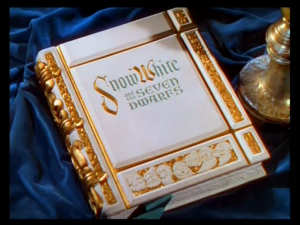

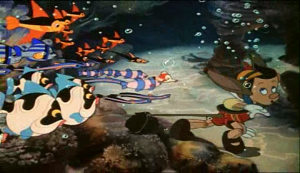
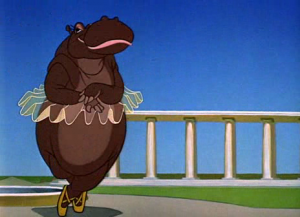
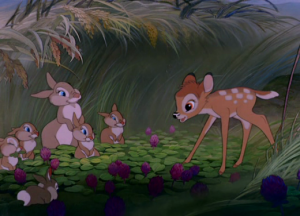
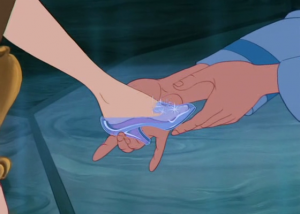

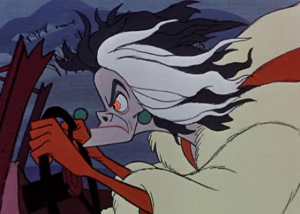
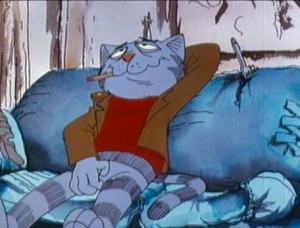


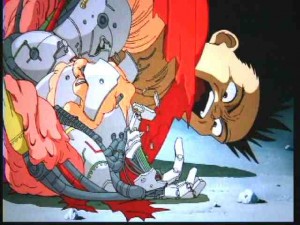
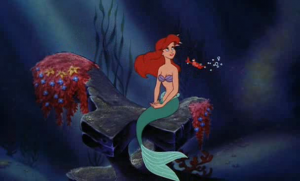
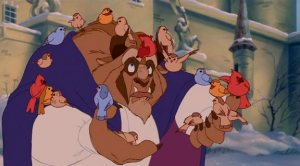
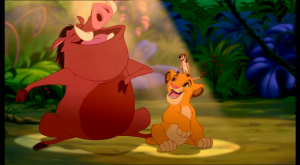
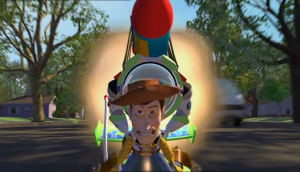
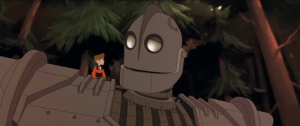
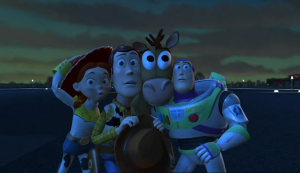

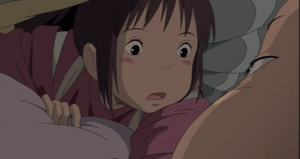




it seems really obvious, but i had never thought about how snow white set a fairy tale trend for animation! as in, that there is no reason for animated films to focus on fairy tales OTHER than a trend. interesting!
also, i did see it once around when it came out, but i don’t remember much of the Iron Giant. what other films would you say it’s influenced?
what film started having talking animals?
very cool, i enjoyed the read!
Talking animals is something that pre-dates animated features, actually. In fact, the first American animated short, Steamboat Willie, had talking animals back in 1918.
Interesting review. Probably agree with most of the choices, though I wouldn’t necessarily consider Roger Rabbit as an animated film. I suppose the mix of cartoon and live action was innovating, but had been seen before in films like Song of the South, Mary Poppins and Bedknobs and Broomsticks.
Oh, and I think Steamboat Willie was in 1928, the first appearance of Mickey Mouse.
Great read though!!
pretty good review.I agree that Roger Rabbit is indeed one of the front runners in the live action-animated genre.You should also check out Atlantis: The Lost Empire.Although it received mixed critical reviews, the animation is amazing and sophisticated in every sense of the word.No surprise that the movie took 5 years to make……
what the fuck is going on with this place i mean like i thought that i could one day we got a life that we could once use in our life and that i could go home and change life and switch souls with the devil. haha decode that bitch
i thought that when we would live longer in peace with pants on our face then we would dance near the noise that intreads us haha never decode that bitch we planning something for the us hah
I am pleased to see Ratatouille in this line up, disappointed that it is credited to Brad Bird though that is inaccurate. I agree the early Disney productions Snow White, 101 Dalmations definitely belong these were films I saw as a child they still inspire me today. Unfortunately Disney do not.
Brad Bird is the credited director and writer for Ratatouille. Source.
Finding Nemo? 😮
Waking Life is missing!!!
An excellent list with a few films that are unheard of which makes it even more interesting! Personally I’d include Dumbo in the main list as it was the first full length animated film to have an animal as the main character and was the highest animated film released in the 1940s. It also recouped the losses made by Fantasia and it’s simplicity and short length made the way for a beautiful and heartwarming story about love, friendship and self belief! It’s also worth mentioning that Beauty and the Beast is to this day the only animated film every to be nominated for the Academy Award for Best Picture which it lost to Silence of the Lambs which was absolute carnage!